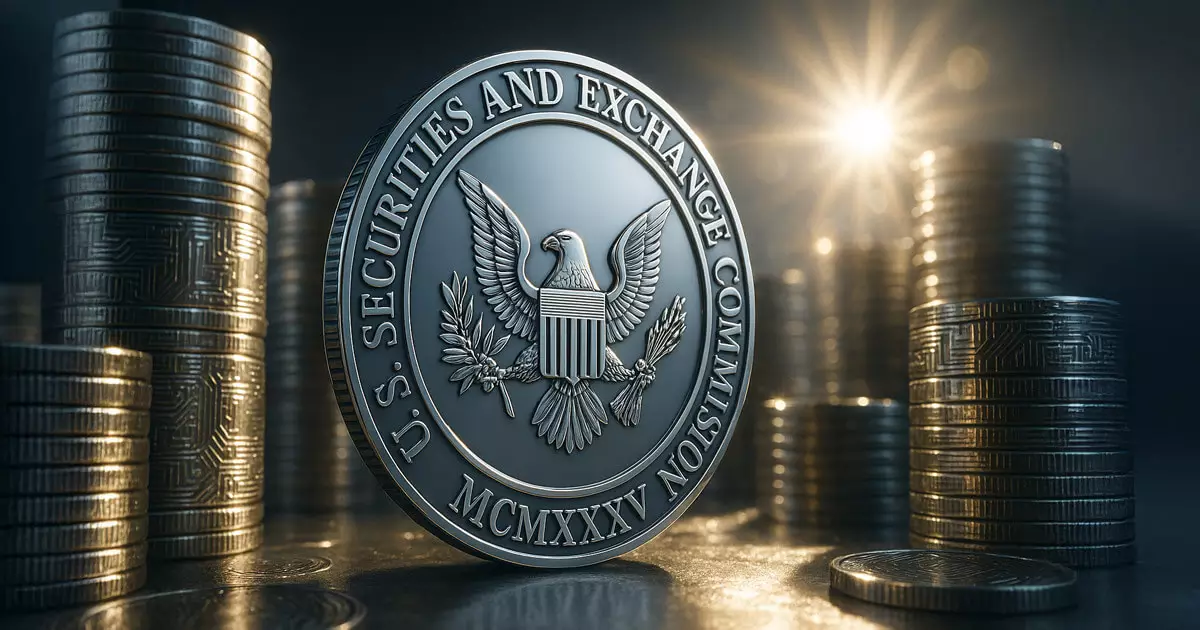The Securities and Exchange Commission (SEC) has recently taken a momentous step by clarifying that common forms of crypto staking are not classified as securities under federal law. On May 29, the SEC’s Division of Corporation Finance affirmed that various forms of staking—self-staking, delegated staking, custodial, and non-custodial—are exempt from the burdens of registration that typically accompany securities transactions. This is a significant relief for both investors and the broader crypto market, yet it raises troubling questions about regulatory consistency and the future of crypto innovation in America.
The SEC states that participants engaged in what they term “Protocol Staking Activities” don’t have to deal with the complexities of registration dictated by the Securities Act. While this guidance may seem like a boon, it masks deeper issues regarding how the regulatory environment is evolving—or, perhaps more accurately, failing to evolve. The world of digital assets is moving at a breakneck pace, and while the SEC is finally acknowledging staking, it is also emblematic of a larger struggle for comprehensive cryptocurrency regulation.
Flawed Reasoning in Regulatory Practices
Not everyone within the SEC is on board with this latest interpretation. Commissioner Caroline Crenshaw has voiced her dissent, suggesting that this approach ignores established legal standards, particularly the Howey Test, which is pivotal for determining whether an asset qualifies as a security. She remarked that the SEC appears to be ‘faking it till they make it’, acting based on speculative future changes rather than adhering to current law. Such skepticism from within the agency not only undermines the newfound clarity but also reflects a profound uncertainty that continues to plague crypto markets.
Crenshaw’s criticism hints at deeper flaws in the regulatory system—could it be that the SEC is scrambling to keep up with a rapidly evolving technological frontier? Dismissing crucial legal frameworks in the name of innovation is problematic. It suggests a reactive rather than a proactive stance, which may deter overseas investment and push American innovators to seek greener pastures in more welcoming jurisdictions.
A Double-Edged Sword
While the SEC’s guidance has been welcomed by some in the industry, it could also have unforeseen negative repercussions. The agency seems to be inadvertently encouraging a landscape rife with ambiguity. Investors often thrive on clear rules, yet, by exempting staking from securities laws, the SEC risks enabling a regulatory gray area where potential fraud could flourish unchecked. A lax regulatory framework does not equate to investor protection, and this could prove disastrous in the long run, endangering the market’s integrity.
Moreover, the notion that providing enhanced services such as early withdrawal options or asset aggregation doesn’t classify these arrangements as securities might be too simplistic. Does this mean we could see a proliferation of what could essentially be termed financial derivatives masquerading as simple staking options? The line between investment and stake is delicate, and the SEC’s guidance risk blurring that line dangerously.
The Future of Ethereum ETFs and Market Dynamics
The clarity around staking also has immediate implications for financial products like Ethereum exchange-traded funds (ETFs). Nate Geraci, president of the ETF Store, pointed out that the restrictions surrounding staking for spot Ethereum ETFs have potentially been lifted, unlocking a pathway for a new revenue stream. However, this would hinge on further guidance from the Internal Revenue Service (IRS) concerning how staking rewards are treated—an area still shrouded in regulatory ambiguity.
The current environment of nine consecutive days of inflows, totaling over $480 million into Ethereum ETFs, indicates a surging interest in crypto investment products. Should the integration of staking into these regulated vehicles succeed, the repercussions could be unmistakable: a renaissance of institutional interest in a sector that has been beset by regulatory headwinds. However, lingering uncertainties could deter individual investors and further complicate the regulatory landscape.
The Regulatory Catch-22
Ultimately, the SEC’s recent guidance on staking serves as a double-edged sword, offering some clarity but also revealing the inconsistencies that plague crypto regulation. On the one hand, it allows for more robust engagement in decentralized finance, a sector that is foundational for the future. On the other hand, it exposes the glaring inadequacies of the system currently in place, drawing attention to the urgent need for comprehensive regulatory frameworks that protect investors without stifling innovation.
The path forward is fraught with ambiguity; without decisive action to establish clear rules, the SEC risks allowing the crypto landscape to devolve into chaos. In navigating this uncertainty, stakeholders must remain vigilant to ensure that they are not caught in a quagmire—one where the potential for growth is overshadowed by the specter of unregulated pitfalls.


















